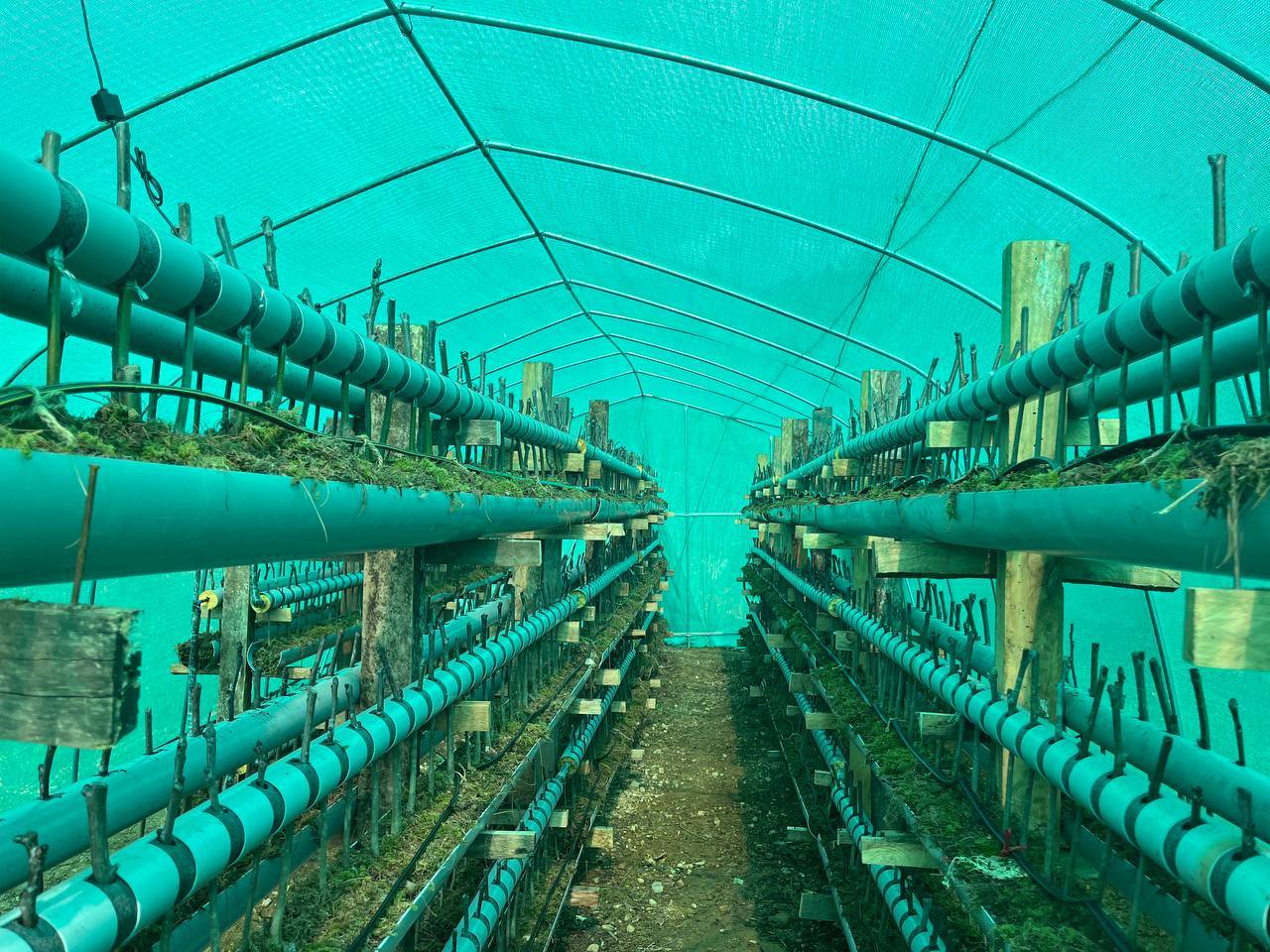Introducing Walnut Hot Callusing Technology to Private Nursery Operator at Mongar

With fund support from CARLEP, hot callusing technology (HCT) for enhanced walnut propagation has been introduced to a private nursery operator at Mongar on cost sharing mechanism. This marks the second promotion of HCT in farmers’ fields, following a successful implementation in Drepong last financial year, where a graft success rate of 76% was achieved.
The walnut seedlings were grafted on February 18th and will remain inside the callusing pipe for four weeks until the callus formation is complete. The process can be remotely monitored through the “eWeLink” app, allowing for precise control of both external and internal conditions. Moreover, the HCT system’s vertical stacking design maximizes space, making it ideal for nurseries in peri-urban areas. In a 5x11m net house, 1,440 seedlings can be accommodated efficiently. With an anticipated graft success rate of 70-80%, the projected income from the sale of these seedlings is estimated between Nu 277,200 and Nu 316,800. This technology will not only enhance local walnut seedling production but also reduce dependence on imports, contributing to increased income generation from this high-value crop.
-ARDC Wengkhar Facebook Page

